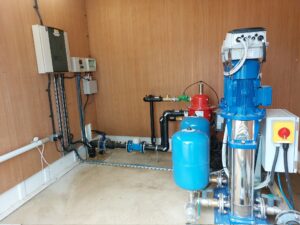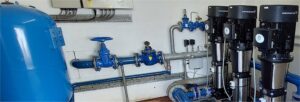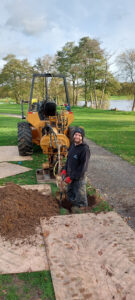Do you know your decoder from your filter?
Related Articles
Irrigation projects can be made more difficult due to confusing and technical terminology, but it doesn’t need to be this way. Here, irrigation expert John Kidson outlines some of the most commonly used products and phrases.
As we enter part five of my irrigation ramblings, first, a quick overview of my past features: Part 1 – irrigation controllers; Part 2 – common questions regarding water storage and harvest; Part 3 – irrigation action plan, and Part 4 – winter jobs.
It’s now the depths of winter and irrigation is likely not a real factor in your day-to-day work. You can revisit my previous articles, parts three and four, which help cover winter ideas and tasks.
I thought it would be helpful to cover some of the commonly used irrigation products and terminology.
BSP. ‘British Standard [Pipe] Thread’ and the most common thread you will come across within the UK. Mainly used with polytetrafluoroethylene (PTFE) tape to seal a thread, you always need more wraps than you expect!
ACME. A thread used in more modern sprinkler designs which uses an O ring to create a watertight seal. Mostly found with valve-in-head sprinklers. You don’t need any PTFE or products on this thread. Just keep it clean and it’s designed to not be tight so the sprinkler can be moved freely like a swing joint!
Decoder / Modules. This is a product that allows a station to run when required. Most brands work on a unique number pre-set by the manufacturer. You then enter this unique number into your controller. The irrigation controller can then search for this number and irrigate for the inputted time. For example, ‘1st Green FL – 29786’, you can see it has 1st Green Front Left and the controller is looking for 29786. At this point, once found along the cable path by the controller, it then allows voltage to the coil (see below).
With some brands you can set your own decoder number, just make sure this is unique.
The newer style of decoders / modules can use less cable joints, bringing the decoder and coil together into one module.
Coil. This is a part that sits between the decoder / module and the solenoid valve or valve-in-head sprinklers. Systems tend to run on either latching or non-latching. Best to always double check before ordering new. A photo of the part and a photo of the controller sent to your irrigation specialist would solve this.
VIH / Valve-in-Head. This is a term used for a sprinkler that’s under its own control, via a decoder or module, and can be run either on its own or in some cases with another sprinkler. Some fairways systems will be set to run a pair of sprinklers.
Pumps sets. I will cover some of the common items used in a pump set.
Pressure relief. A device that releases pressure from the system. For example, if your pump set would normally sit idle at 8bar then the pressure relief would be set at 9bar.
This device can then allow the water within the system to discharge out of the pipe network to help stop over-pressuring the system in case of faulty products or incorrect settings. This would normally feed the water back into the storage tank or reservoir.
Filter. You may find your system has a filter, some auto flush on a timer or control via the irrigation controller. Others can be a manual process and worth the time to undertake the flushing process. If you ever decide to change a filter, consider the type of the mess / filter as these vary.
NRV / Non-Return Valve. This is a valve that’s made to stop water returning once it has passed this valve. If you have multiple pumps, there will be one per pump.
Whenever it comes to working on an irrigation system, always make sure you understand where the water is, powered or not, under pressure and never touch any items within a pump house you’re not sure of.
I will look to cover more terminology over the coming issues.
Follow John Kidson on Twitter @JKIrrigation




























